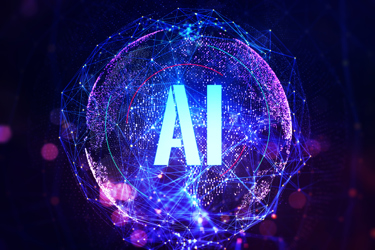How AI Helps Retailers Achieve Environmental Sustainability
By Maziar Adl, CTO, Gocious

Artificial intelligence is still working its way into all our lives in one form or another, proving its benefits in our homes, at work, and beyond. Artificial Intelligence and other forecasting tools are poised to become invaluable in the retail industry, not only to drive productivity and sales but also to increase energy efficiency in real time.
At this point, sustainability in retail is more than just a trend - whether due to government regulations, a desire to promote itself as a green organization, or a desire to produce more environmentally responsible products, the efforts toward sustainability are here to stay.
The fashion market is a prime example. The worldwide ethical fashion market is already a $6.35 billion industry, growing at a compound annual growth rate (CAGR) of 8.7% since 2015, The Business Research Company found. That growth is expected to increase over the next several years, growing to $9.81 billion in 2025 and $15.17 billion by 2030.
Across sectors, business leaders are finding new uses for AI and forecasting tools - the retail industry is no different. Retailers are exploring how to use AI in unique ways to propel their companies forward and improve business by promoting sustainability at every level.
Consumers and retailers alike are eager for ethical retail, from fashion to technology, home goods to beauty, pushing sustainability to the foreground to move forward in an ever-changing retail environment.
Sustainability At Every Level
To achieve true sustainability and meet the global demands for environmental responsibility, it’s crucial to examine every level of product development and distribution in the retail industry.
Companies can greatly improve their levels of sustainability from the ground up by using technology to track sustainability efforts, identifying what works and what can be improved. Beginning with the planning stage, companies can vitalize their sustainability efforts by utilizing technology to track each step along the production, distribution, and sales process.
For example, fashion retailers can begin by examining the materials they use. Dashboards can be used to consider whether the cotton for fabrics is sustainably grown; if the pigments used in the dye are chemical-based or natural to the fibers; whether more natural substitutes can be used. Companies can measure these metrics down to the seemingly minor materials used in clothing labels and tags to create products that are sustainable from top to bottom.
AI and other forecasting tools also can help gauge sustainability in the manufacturing process itself. These powerful tools can monitor emissions rates to ensure carbon neutrality, analyze the kind of energy being used at production-sites and investigate the level of successful recycling that takes place all along the production and distribution pipeline. Company leaders know that when it comes to energy sustainability across a large organization, the small things add up quickly and can make or break a green initiative.
By using these tools, company leaders can then gain a clearer understanding of whether they’re on track to meet their green initiative goals. If not, they can then reconfigure their operations to meet or exceed those goals, improving not only sustainability but providing room for growth in productivity and sales.
Automating some of these processes saves precious time, too. By using AI and forecasting tools, employees are freer to find solutions to sustainability issues, rather than spending valuable time trying to monitor green initiatives more slowly.
For example, by automating the process of tracking emissions rates from vehicles along the supply chain, employees can instead focus on how to improve these rates, whether by reconfiguring shipping methods or changing shipment vehicles altogether.
Tracking Sustainability Across A Life Cycle
Forecasting tools grants companies the flexibility to not only track sustainability for a single product, but to seamlessly apply that same automation and AI to other features and components in other product lines. This is particularly valuable for retailers that make a different range of products, such as a sporting goods retailer that makes basketball, baseball, and tennis products.
These products require different materials and have different production times, making sustainability efforts complex. AI and forecasting tools help cut through the confusion, streamlining sustainability efforts across departments.
By so closely examining sustainability efforts and successes along the production process, companies can see which processes and tools should be used across product lines, which need improvement and which would better benefit a company by being phased out.
While sustainability can be achieved from the ground up, it’s during the top-down planning stage that companies can do the most in ensuring energy compliance and promoting green initiatives. Forecasting tools and predictive analytics allow companies to speed up these processes to meet their goals and achieve sustainability on all levels.
